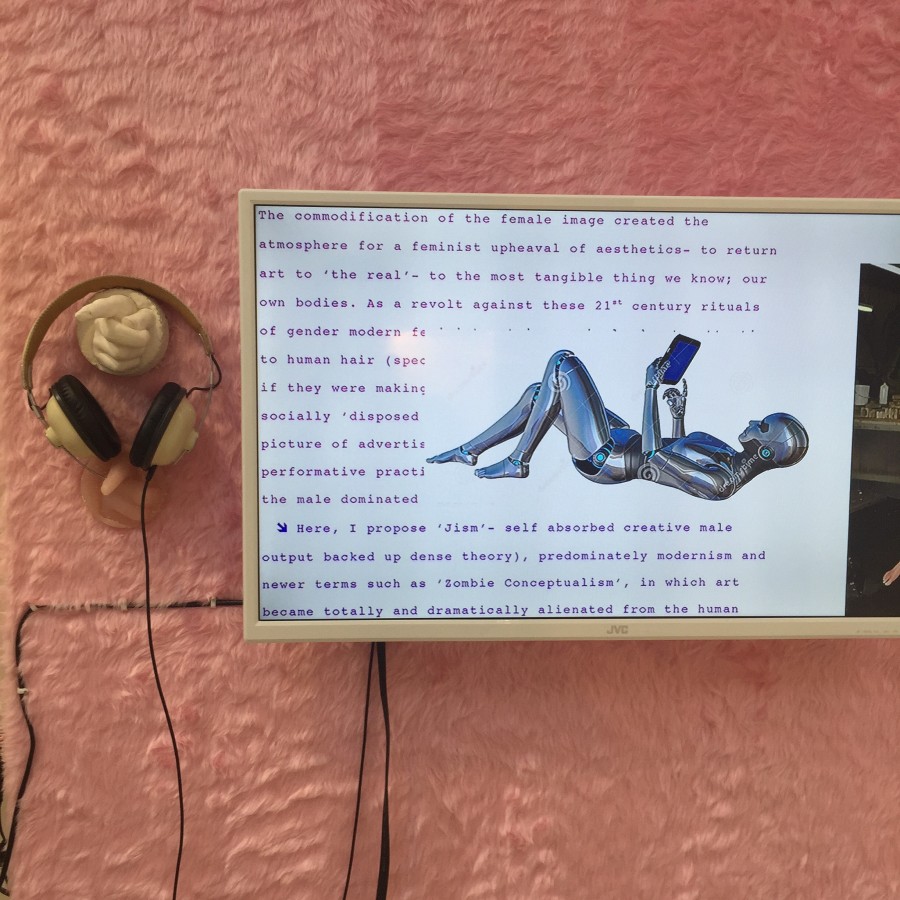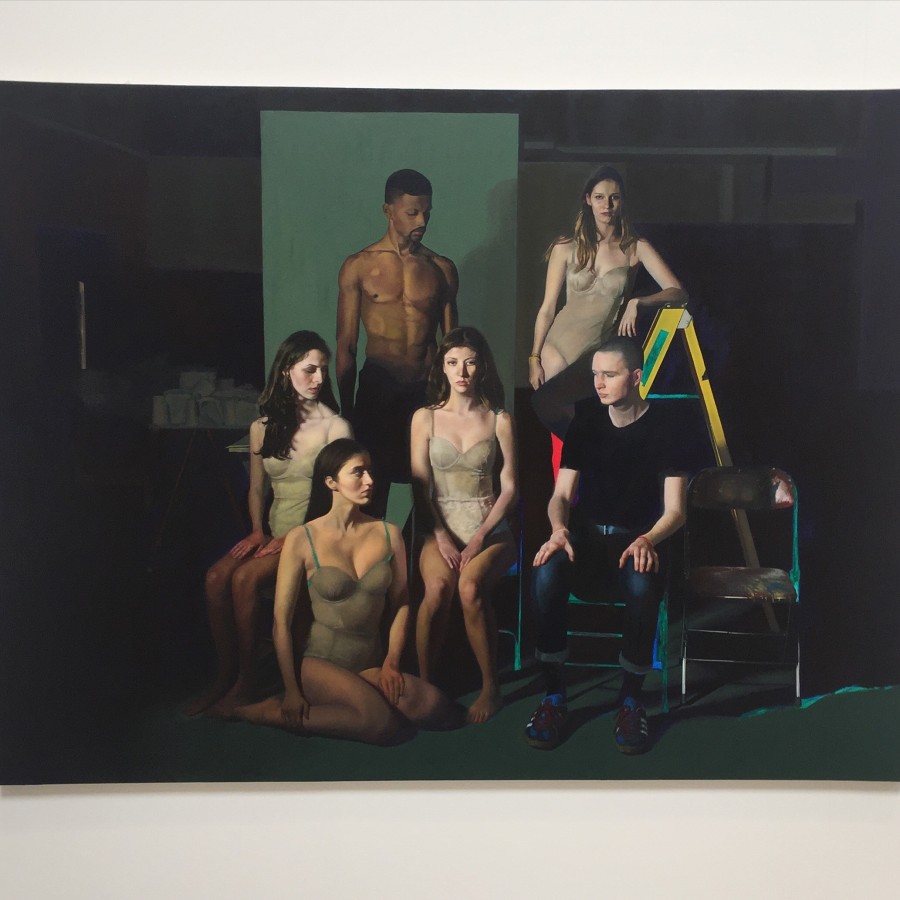It was Brian O’Doherty who said that we experience the space before we experience the art in our contemporary context. Within the confines of the blank white walls at the new Ruskin School of Art studio in Cowley, the visitor finds the finalist degree show, exhibiting the debutants of the contemporary art scene.
The show was varied, with artists exploring experimental uses of both new and traditional media, drawing influence from both popular culture and visceral self experience. This was a show that took you on a journey.
Entering the space, one was confronted with both the sound pieces that formed a part of the video installations hidden behind curtains, before moving towards the more central part of the studio.  One video installation which stood out in particular was Lu Williams’ Scum Channel — a video installation which combined a thought-provoking exploration on female representation within a tactfully kitsch setting. In deploying figures that were uncanny and almost unsettling, one couldn’t help but remain engrossed at the questioning of paradigms that are increasingly being challenged.
One video installation which stood out in particular was Lu Williams’ Scum Channel — a video installation which combined a thought-provoking exploration on female representation within a tactfully kitsch setting. In deploying figures that were uncanny and almost unsettling, one couldn’t help but remain engrossed at the questioning of paradigms that are increasingly being challenged.
The use of 3-D media was not shied away from by any means, with interactive sculptures such as Lucy Gregory’s which explored the boundaries of both space and balance, transforming things one might not consider important into works self-described as “wonderfully haptic, reshaped before the point of a total loss of use.”
In the more traditional medium of paint we find artists indulging in figurativism. From John Izatt-Lowry’s exploration of human details, to studies of classical antiquity with a light oil sketch style, to Emily Carrington Freeman’s close exploration of light and form within drapery and flesh. Khushna Sulaman Butt. figuratively depicted a scene both intense and quiet. In drawing from personal experience, the painting almost appears to be a transportive plane into the artist’s memory.

Contrarily exploring non-figurative and eccentric methods of painting, I spoke with Ollie Bass about his art practice.
Do your concepts influence your choice of medium, or were you already predisposed to painting which has subsequently shaped your practice?
“I woke up in a version of a room that I’d already seen before, trying to reenact last night’s ideas in my head. The only possibility of success is to process these artefacts through the same painting again and again.”
Do you consider this show as a start or end of your artistic study — as an artist, do you think does one ever finish studying art?
The parameters of the institution are both a disability and a crutch. To paint in free fall is to only have yourself to box against.
Who are your influences and what would you say to yourself at the start of your degree?
I’m influenced by the shrapnel from my pockets, we are all implicated by the language of the high street. What would I say to myself? Put a higher value on clarity.
Overall, the show was a success. The large artistic corpus of ideas were realised in ways that weren’t entirely accessible, but idiosyncratic nonetheless. One can only look forward to the new creative minds that may grace the artistic forefront in the foreseeable future.


